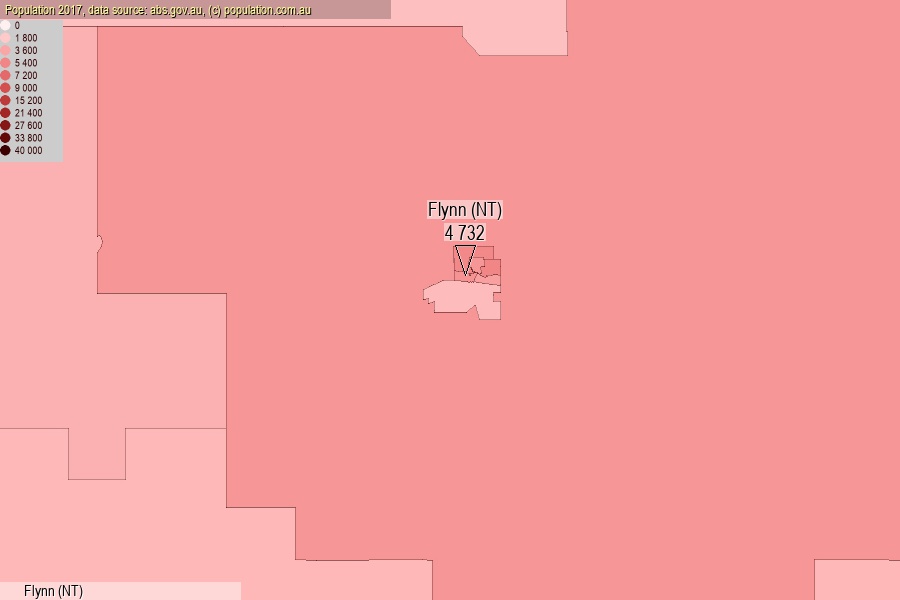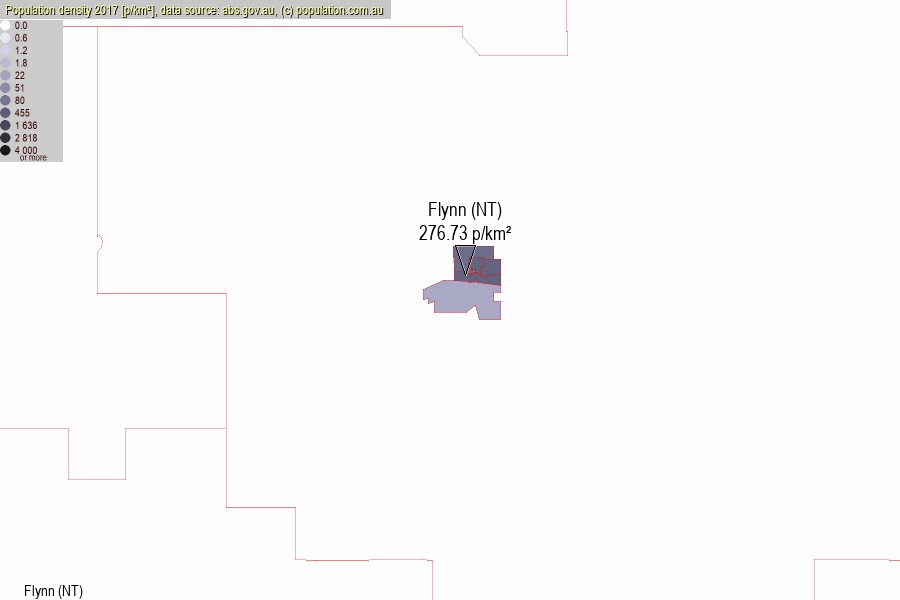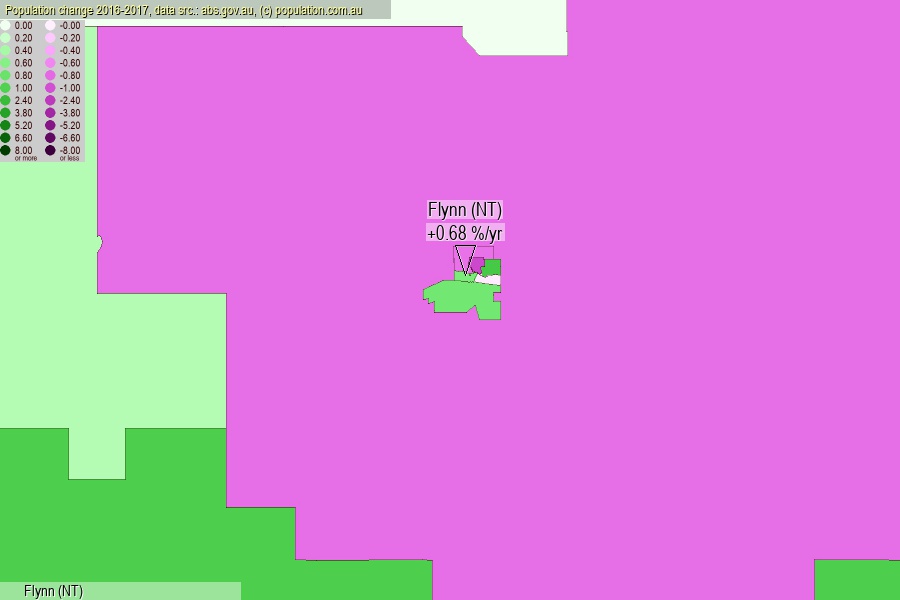 population.com.au
population.com.auLast official estimated population of Flynn (NT) (as Statistical Area Level 2) was 4 732 people (on 2017-06-30)[2]. This was 0.02% of total Australian population and 1.918% of NT population. Area of Flynn (NT) is 17.10 km², in this year population density was 276.73 p/km² . If population growth rate would be same as in period 2016-2017 (+0.68%/yr), Flynn (NT) population in 2025 would be 4 996. [0]



Click to enlarge. Flynn (NT) is located in the center of the images.
Population [people], population density [p./km²] and population change [%/year] [2]
View borders » (new window) [4]
[1991-1992] +0.13 %/Yr.
[1992-1993] +0.55 %/Yr.
[1993-1994] -0.53 %/Yr.
[1994-1995] -0.14 %/Yr.
[1995-1996] +0.14 %/Yr.
[1996-1997] -1.43 %/Yr.
[1997-1998] -3.09 %/Yr.
[1998-1999] -2.60 %/Yr.
[1999-2000] -2.19 %/Yr.
[2000-2001] -2.48 %/Yr.
[2001-2002] -1.29 %/Yr.
[2002-2003] -1.33 %/Yr.
[2003-2004] -1.55 %/Yr.
[2004-2005] -0.84 %/Yr.
[2005-2006] +0.04 %/Yr.
[2006-2007] +0.32 %/Yr.
[2007-2008] +3.04 %/Yr.
[2008-2009] +3.73 %/Yr.
[2009-2010] +1.03 %/Yr.
[2010-2011] +0.08 %/Yr.
[2011-2012] -1.13 %/Yr.
[2012-2013] -1.15 %/Yr.
[2013-2014] -2.30 %/Yr.
[2014-2015] -2.23 %/Yr.
[2015-2016] -1.57 %/Yr.
[2016-2017] +0.68 %/Yr.
[0] Calculated with linear interpolation from officially estimated population
[1] Read more about SA2 and Australian Statistical Geography Standard (ASGS) on abs.gov.au
[2] Population data from Australian Bureau of Statistics (Population and density: 2017; change: 2016-2017)
[3] Digital Boundaries: Australian Statistical Geography Standard (ASGS) 2016.
[4] Border coordinates are simplifyed using Ramer-Douglas-Peucker algorithm.